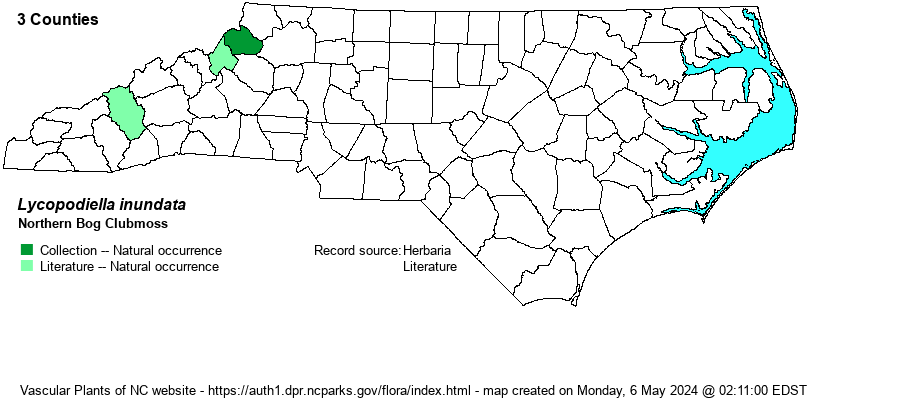| Author | (L.) Holub | |
| Distribution | Known only from a few records in the Mountains, with a specimen for Watauga County and sightings from Avery and Haywood counties. It was first found in the state in 1985. Essentially all of the specimens showing on the SERNEC database presumably refer to L. appressa. An "accepted" report from New Hanover County, on iNaturalist, is so far out of range that it cannot be admitted onto this website. A specimen from Stokes County at UNCA needs vetting, as it is from roadside. A January 2024 report from Burke County turns out to be L. alopecuroides.
This is a Northern species, ranging across Canada and south to NJ, PA, MN, and northern CA, and farther south in the Appalachian Mountains to western NC. | |
| Abundance | Extremely rare, known from just three records. This is a State Endangered species. | |
| Habitat | This is essentially a bog species in NC, though it can occasionally be found in damp sandy or gravelly ground where there is seepage -- essentially resembling a bog. The 2024 Burke County plants grew in a bog with cranberries. |
| Phenology | Fruits from July to September. | |
| Identification | This is a typical clubmoss in aspect, with a short sterile stem along the ground and a short erect fertile stem. The needle-like leaves on the sterile stem are dense and in 8-10 ranks, with the lower ones twisted so that they are ascending to vertical, as are most of the lateral leaves. The fertile stem is rather short, most just 3 inches long at most, including the single strobilus, which is often just 1-1.5 inches tall. The other species growing in the mountains, L. appressa, has 2-6 fertile/upright shoots per horizontal stem, whereas in L. inundata there is usually just one such fertile stem per sterile horizontal one. | |
| Taxonomic Comments | The species was formerly named as Lycopodium inundatum.
| |
| Other Common Name(s) | Inundated Clubmoss, Marsh Clubmoss | |
| State Rank | S1 | |
| Global Rank | G5 | |
| State Status | E | |
| US Status | | |
| USACE-agcp | OBL link |
| USACE-emp | OBL link |

